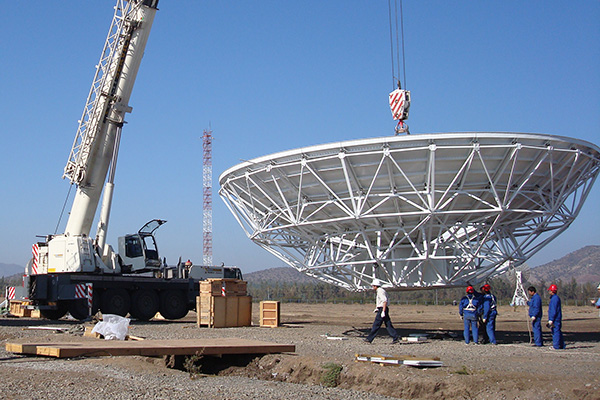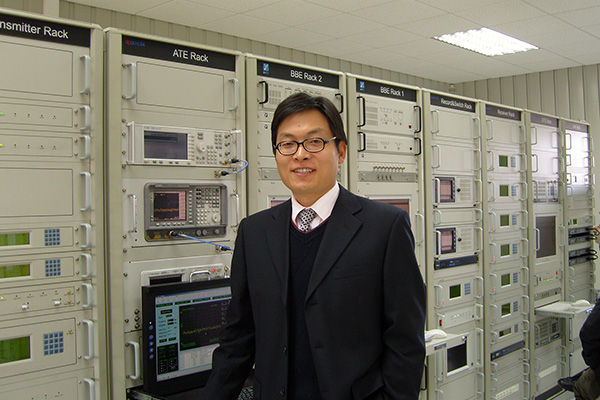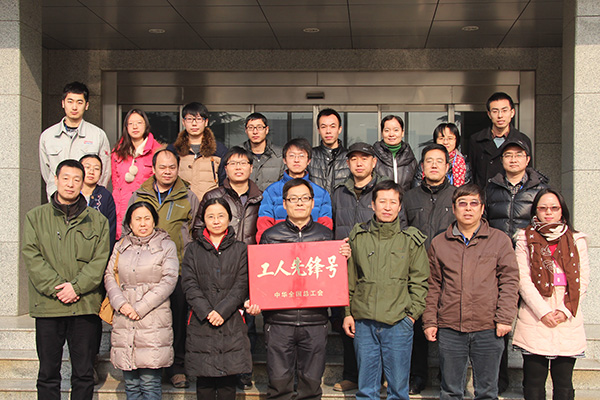Geng Hujun, a "Star Shepherd": Keep a steady footing and polish the background of the struggle of space researchers.

CCTV News:"If the satellite is compared to a kite, ‘ Measurement and control ’ It’s the kite string that people are touching. Therefore, some people call us ‘ Shepherd ’ 。”
After the successful launch of Tiangong-2 in 2016, Geng Hujun, one of the "animal husbandry people", gave a vivid metaphor for his career when interviewed by the media.
Geng Hujun is currently the Deputy Chief Engineer of the 54th Research Institute of China Electronics Technology Corporation and the Deputy Director of the Remote Control and Telemetry Department. After graduating from xidian university in 1993, he joined China Electronics Technology Corporation and became a member of the China Aerospace Measurement and Control Team.
After more than 20 years of fighting in the space TT&C research front, Geng Hujun and his colleagues have continuously filled the gaps in TT&C technology and witnessed the dazzling achievements of the space industry. It is necessary to look far into space, but also to be down-to-earth. Geng Hujun explained the romantic realism feelings of a scientific researcher with the blood and initial heart of serving the country scientifically and the courage to overcome difficulties.
People who fly the "Chang ‘e kite"
TT&C communication system is one of the eight systems of manned spaceflight project, which is the nervous system of space TT&C network and communication between heaven and earth. It is the link between ground and spacecraft, ground TT&C center and TT&C station, and plays an important role in manned spaceflight mission.
Expanding the direction of aerospace TT&C specialty and striving for more equipment development tasks are the core of the work. Fifty-four institutes undertake all the development tasks of domestic and foreign land monitoring and control stations, accounting for almost half of all the monitoring and control equipment for manned space flight.
In 2010, Chang ‘e II flew into space with the eyes of the whole world. The location of the measurement and control system is related to the flight orbit of Chang ‘e-2. In order to avoid areas with heavy electromagnetic pollution, Geng Hujun and his colleagues often stay for months in remote and uninhabited places such as the Gobi Mountains.

In the Chang ‘e II mission, Geng Hujun led the team to complete the transformation tasks of the S/X band unified measurement and control system at Kashgar Station, the S band unified measurement and control system at Qingdao Station, the 50-meter-diameter radio telescope antenna and the data receiving subsystem and data transmission system of the ground application system. "These monitoring stations should be able to monitor the flight process of Chang ‘e II and master its orbital position at all times. Wherever the station is suitable, we will go to work. " Yan hujun said.
Under the leadership of Geng Hujun, the 18-meter single receiving station of Kashgar Station, which was originally built for the Chang ‘e-1 mission and only had the single S-band receiving ability, was transformed into a complete set of full-function measurement and control stations. These innovations have greatly improved China’s measurement and control technology, and filled the domestic gaps in measurement and control capabilities and measurement and control frequency bands.
Guarding "Goddess" Flying in Space
On September 15th, 2016, the Long March II FT2 carrier rocket carrying Tiangong-2 Space Laboratory was ignited and launched at Jiuquan Satellite Launch Center.
"When Tiangong-2 was launched, our communication measurement and control equipment accurately guided Tiangong-2 into the scheduled orbit. After Tiangong-2 was successfully launched, our equipment accurately controlled it to run according to the scheduled trajectory, and timely transmitted all kinds of voice and image information it collected back to the ground center. After the astronauts went up, the dialogue and image transmission between heaven and earth also depended on our communication measurement and control network." Geng Hujun introduced that whether Tiangong-2 can be successfully launched and whether it can operate safely in the sky depends on the invisible communication measurement and control network.
At present, communication measurement and control through relay satellites has become the main force of manned space communication measurement and control network. The relay satellite communicates with the spacecraft and the command center through the ground terminal station. The ground terminal station is mainly responsible for the command and dispatch, control calculation, data processing and information exchange of relay satellites, and is the "nerve center" for relay satellites to play the role of communication measurement and control.
"When the relay satellite conducts measurement and control, it will send out radio signals to automatically aim at the spacecraft; The spacecraft also aimed at the relay satellite in the same way. It is equivalent to two light beams in space that are more than 30,000 kilometers apart. Therefore, in order to achieve accurate measurement and control, relay satellites must first ensure their accurate positioning. At present, at a distance of more than 36,000 kilometers, our positioning error of relay stars is controlled within 3 m. "

Geng Hujun introduced that the longest measurement and control communication time of a ground measurement and control station is only 8 minutes. If the spacecraft does not fly directly over the ground station, the time of TT&C communication will be further shortened. The relay satellite is equivalent to a 36,000-kilometer-high measurement and control station in space. Because it stands high, it can see far. In each operation of Tiangong-2, the communication time of a relay satellite can reach about 40 minutes, which greatly improves the efficiency of communication measurement and control.
"When the prosperity is exhausted and Tiangong-2 is working in space day after day, the communication measurement and control equipment of our institute will still wait for her in an invisible place and let her run healthily." Geng Hujun said that he and his colleagues are like watchmen, and Tiangong 2 is their "goddess". Although she flies in space, their equipment carefully leads the invisible kite line to protect Tiangong-2 to complete its mission.
The glory of ordinary scientific research workers
Due to his outstanding work performance, Geng Hujun won the May 4th Youth Medal of Hebei Province in 2011, and led the team to make continuous breakthroughs in scientific research management positions.
Geng Hujun’s son is also an aerospace fan. The knowledge of artillery and ships, and all kinds of timing passwords for the launch of Chang ‘e II can come with your mouth open. He once asked his father to take himself with him when he was on a business trip. "The country spends so much money on the lunar exploration project. We know that the responsibility is great, and we can only succeed, but we can’t fail. Everyone can only arrange their own itinerary around the engineering needs." Yan hujun said.

Whether in the neon lights or in the wilderness, Geng Hujun and his colleagues have only one goal: to constantly pursue technological progress and provide better conditions for the aerospace industry.
"Often when we go home after a busy night, sanitation workers are already brushing the road. A few hours later, we have to start a new day’s work. " Geng Hujun said that with the development of manned spaceflight, the measurement and control technology has been continuously improved. As an ordinary scientific researcher, he is honored and proud to be able to participate in one major aerospace project after another.